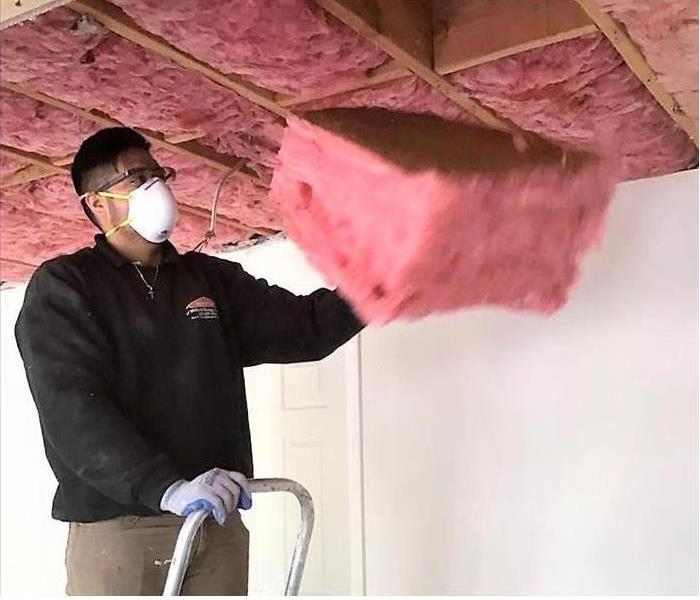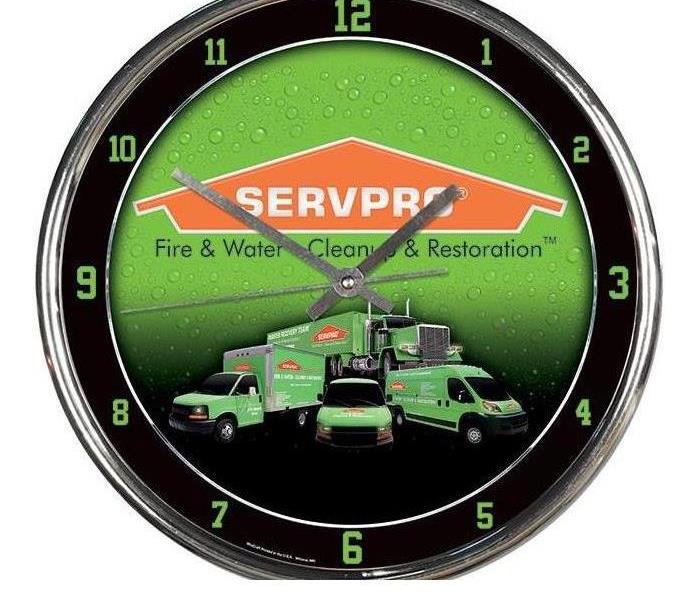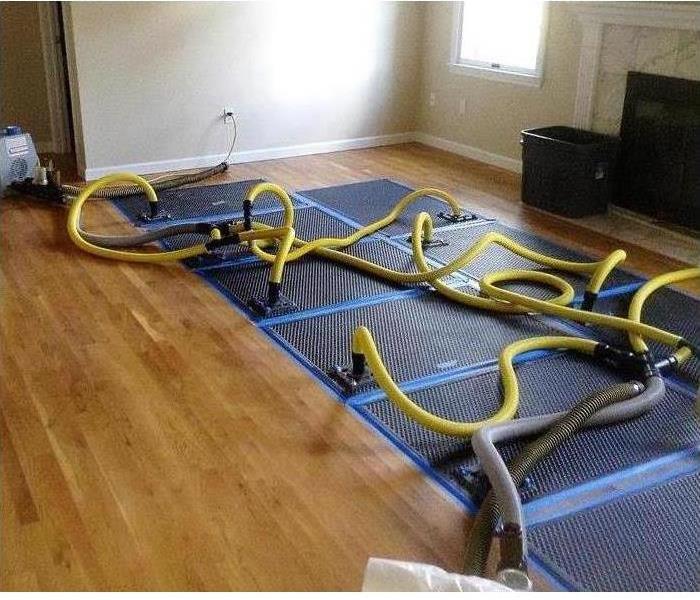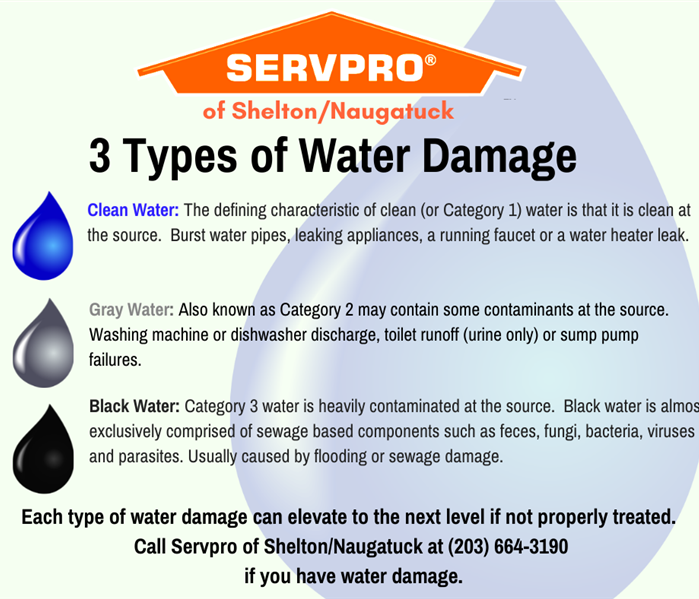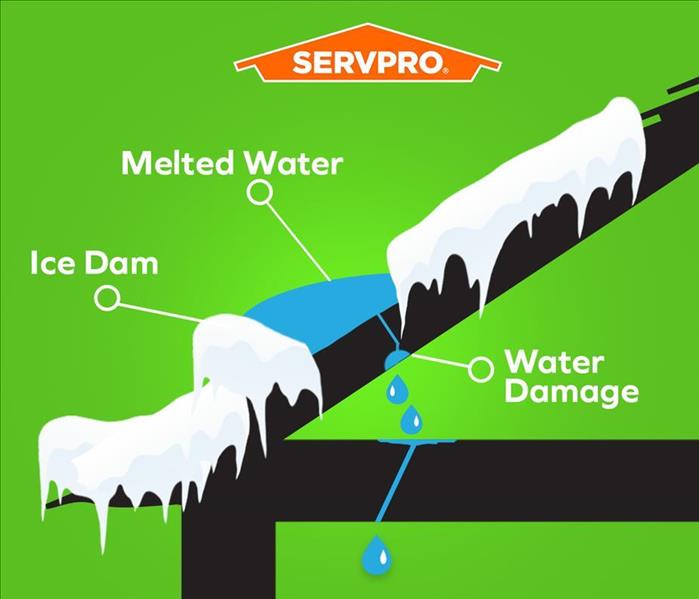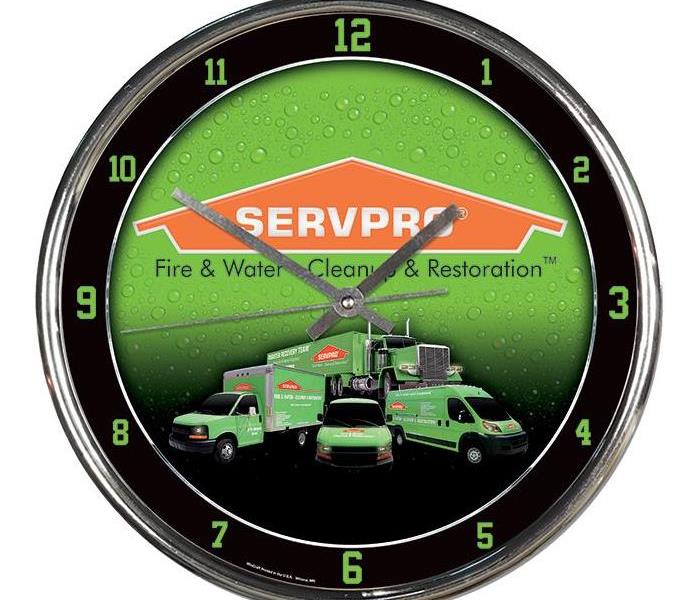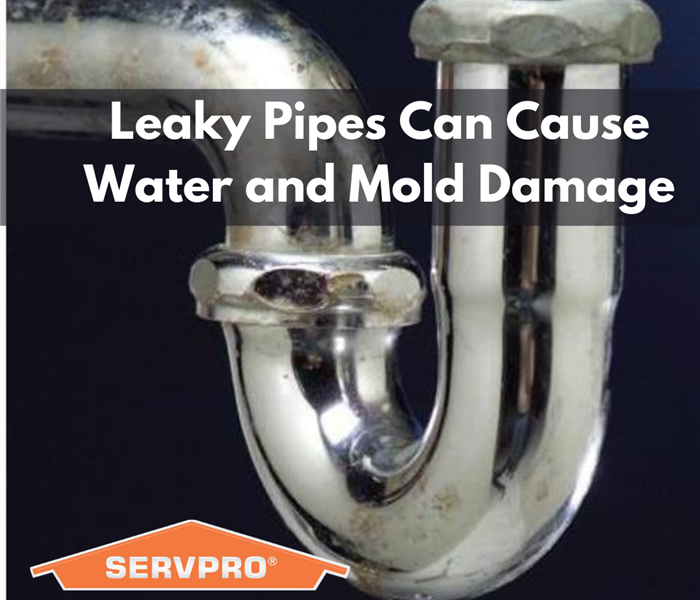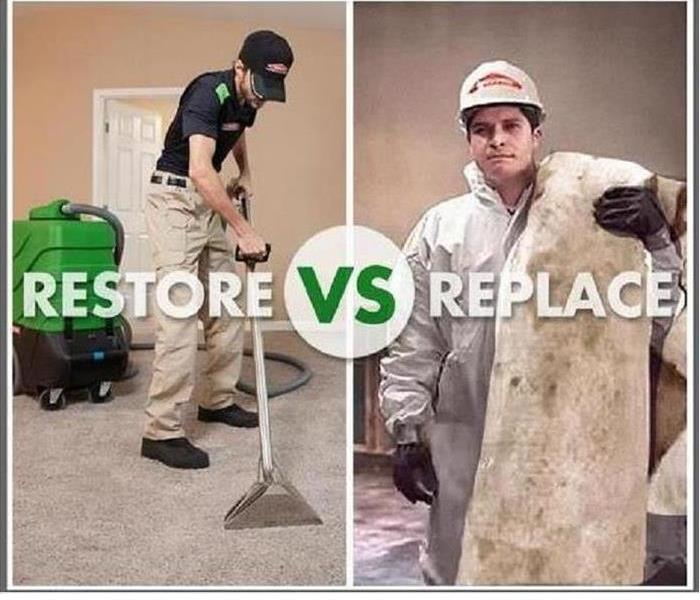Recent Water Damage Posts
Beyond Restoration: Restoring Peace of Mind
6/17/2024 (Permalink)
Imagine coming home to discover your house transformed into a watery disaster zone, courtesy of a burst pipe. It's a scenario that strikes fear into the hearts of homeowners everywhere. However, amidst the chaos and despair, there exists a beacon of hope: SERVPRO®, the trusted name in water damage restoration.
The Calamity: A Burst Pipe
The sudden rupture of a water pipe can turn a peaceful home into a scene of chaos within minutes. Whether due to aging infrastructure, extreme temperatures, or an unforeseen accident, a burst pipe unleashes gallons of water into places where it doesn't belong. From soaking carpets and furniture to seeping into walls and ceilings, the damage can be swift and extensive.
Initial Response: Navigating the Crisis
In such moments of crisis, quick action is crucial. The first steps involve shutting off the water supply to prevent further flooding and ensuring the safety of all occupants. Once these immediate concerns are addressed, the focus shifts to damage assessment and mitigation. Here's where SERVPRO steps in.
SERVPRO: The Restoration Experts
SERVPRO is not just a cleanup crew; we are a lifeline in times of water damage emergencies. With their expertise and experience, SERVPRO teams swiftly assess the extent of the damage. Our thorough inspection identifies areas affected by water intrusion, even those not immediately visible to the untrained eye.
The Restoration Process
Once the assessment is complete, our team formulates a comprehensive restoration plan tailored to each unique situation. This plan typically includes:
Water Extraction: Using powerful pumps and vacuums, SERVPRO extracts standing water from affected areas, minimizing further damage and mold growth.
Drying and Dehumidification: Industrial-grade air movers and dehumidifiers are deployed to remove moisture from floors, walls, and air spaces. This step is crucial in preventing secondary damage and mold formation.
Cleaning and Sanitizing: Salvageable belongings and structures are meticulously cleaned and sanitized to mitigate the effects of water damage and restore them to preloss conditions.
Restoration: Finally, our skilled technicians undertake repairs and reconstruction as necessary. This may involve replacing drywall, repairing structural damage, or restoring damaged surfaces like carpets and hardwood floors.
Beyond Restoration: Restoring Peace of Mind
While SERVPRO's primary mission is physical restoration, our impact goes beyond repairing walls and floors. We restore peace of mind to homeowners by handling the complexities of insurance claims and providing clear communication throughout the process. Our dedication to customer satisfaction ensures that homeowners can focus on rebuilding their lives with minimal disruption.
How long will it take to dry out my house?
7/10/2023 (Permalink)
It's the question on everybody's mind when the SERVPRO team is called to your home after a water damage. And it seems like it should be an easy answer however there are a number of variables that can affect how quickly the restoration of your home will take.
When our team arrives at your home, we begin to document the cause of water damage, the extent of damage, and all surfaces involved. We then formulate a water damage restoration plan using a software program that is designed determine the number of air movers, air scrubbers and dehumidifiers are required to begin the drying process.
Of course, our team knows that there is more to this work than technical specs and we don't completely rely on a computer system. Our property managers utilize their decades of experience restoring homes and businesses after water damage in determining a treatment plan.
So, to answer the question - when will it be dry? On average, a typical house will be dry in about four days, depending on the extent of the damage. For example, vacant homes usually have more severe damage and mold may have begun to grow before the water damage was discovered, necessitating more extensive treatment.
We all want the restoration work to be done quickly and efficiently. Our crew works as a team to do the job right and allow you to go back to your normal routine as quickly as possible.
HVAC Causes Water Damage
7/16/2022 (Permalink)
Has an air conditioner leak causing water damage to your home?
Air conditioners are known to leak – whether from a dirty filter, a malfunctioning pump, a cracked drain pan or even a damaged evaporator coil. We’ve seen this cause significant water damage to New Haven area homes. It can soak sheetrock walls and ceilings as well as insulation and carpeting.
If you have flooding from an A/C leak, your first course of action is to shut the unit off and call your serviceman to identify and repair the problem. Then, call SERVPRO of Shelton, Naugatuck to clean it up. When we receive your call, our office will send a team out to inspect the situation and immediately start the restoration work.
To treat water damage caused by air conditioning units, our treatment plan will likely include water extractors to remove any standing water as well as water that has soaked into carpets and upholstery. We also treat water damage events with air movers and dehumidifiers to remove the moisture out of the air and expedite the drying process. We use our floor mat extraction system to remove the moisture from wet wood and tile floors. This system utilizes a strong suction by use of mats, which are attached to a vacuum with hoses, allowing the vacuum to draw out moisture from underneath the floor.
Our services include the removal of any damaged and unsalvageable materials such as wet sheetrock, flooring and damaged baseboards. Our building services team is CT licensed to rebuild the damaged portions of your home. This might include repairing and painting walls, installing new flooring or even a complete rebuild of your home if necessary.
Why the Type of Flood Water Matters
6/1/2022 (Permalink)
Our approach to treating water damage in Connecticut homes depends on which category it falls into.
CAT 1 or Clean Water
Clean water is just that- water that has come from a source that is not contaminated. Examples of this would be a pipe bursting or a refrigerator leak. Also, if you have a leak that allows rainwater in through your roof, it is considered clean. The biggest hazard clean water presents is if the area that has been damaged is not properly cleaned and dried. This can result in mold and fungus growth.
CAT 2 or Gray Water
Gray water is water that is slightly contaminated, either because of the nature of the source or because of neglect. For example, clean water can become “gray” water if it is left untreated for an extended period time. When a toilet or washing machine overflows, the resulting water would be considered gray because of its source. Toilet overflows containing urine only are considered gray.
CAT 3 or Black Water
CAT 3 water may include bacteria, chemicals, pesticides, microbes and more. Sewage based components such as bacteria, fungi, feces, viruses and parasites. Black 3 water situations are usually caused by sewage backups or overflows and flooding.
Since the human eye cannot see bacteria, it is not always obvious whether the water in your home is a CAT 2 or CAT 3. If you experience a flood from a heavy rain, the water may look “clean,” but if there is any ground water that has backed up into your home as a result, there may be invisible microbes lurking in the water.
Any water damage that is not treated correctly will eventually elevate to the next category. Even a simple pipe burst can turn into a mold issue if not treated. If you have any water damage in your home, give us a call at (203) 664-3190 for service that you can count on.
Water Dripping Down the Walls of Your House?
2/14/2022 (Permalink)
The Naugatuck Valley has had a rough few weeks- with snow, ice and single digit temps hitting us hard. Our office has received a number of calls from homeowners with water dripping down their walls - a sure sign of an ice dam.
An ice dam is a ridge of ice that forms at the edge of a roof. Typically, this happens after a snow storm, when there is a pile of snow sitting on the roof above your attic. After the weather warms to above 32 degrees and melts the snow, it causes the top layer to form into a mound of ice. The water trickles down between the layer of snow and the shingles until it reaches the eave of the roof, which stays cold because it extends beyond the side of the house. There, the water freezes, gradually growing into a mound of ice.
An ice dam can damage both your roof and the inside of your home because when the ice dam reaches its capacity, it begins to make its way under the shingles. When the ice melts, it drips into your home. The walls, insulation and ceilings of your home can become damaged. If left untreated, mold can also become an issue.
If your Fairfield County home has an ice dam, there are some steps that you can take to remove it.
1. Remove the ice dam by breaking it free in small pieces by tapping it gently with a blunt mallet. Work slowly and carefully so that you do not damage your shingles.
2. Use calcium chloride ice melter to weaken the ice. This will melt its way down through the dam, clearing a path for the underlying water to drain. Do NOT use rock salt, as it will damage paint and metal.
The SERVPRO of Shelton, Naugatuck team is trained and equipped to restore homes that have water damage from ice dams. Call us if you have damage to your roof from snow and ice this winter.
How Long Will it take to Dry Out My House?
11/10/2021 (Permalink)
How long will it take to dry out my house?
It's the question on everybody's mind when the SERVPRO team is called to your home after a water damage. And it seems like it should be an easy answer however there are a number of variables that can affect how quickly the restoration of your home will take.
When our team arrives at your home, we begin to document the cause of water damage, the extent of damage, and all surfaces involved. We then formulate a water damage restoration plan using a software program that is designed determine the number of air movers, air scrubbers and dehumidifiers are required to begin the drying process.
Of course, our team knows that there is more to this work than technical specs and we don't completely rely on a computer system. Our property managers utilize their decades of experience restoring homes and businesses after water damage in determining a treatment plan.
So, to answer the question - when will it be dry? On average, a typical house will be dry in about four days, depending on the extent of the damage. For example, vacant homes usually have more severe damage and mold may have begun to grow before the water damage was discovered, necessitating more extensive treatment.
We all want the restoration work to be done quickly and efficiently. Our crew works as a team to do the job right and allow you to go back to your normal routine as quickly as possible.
Do You Have a Musty Smell in Your House?
11/1/2021 (Permalink)
In our years in the water damage restoration industry, we have seen many causes of water damage - from toilet overflows to burst pipes to roof leaks.
Leaky pipes are the cause of many calls to our office. They are often hidden behind walls and cabinets and not discovered until the damage is widespread. Because of this, a pipe leak can cause a considerable amount of damage as the water becomes absorbed into walls, carpeting and ceilings. If allowed to leak long enough, a pipe can damage wood support beams and cause structural issues to a home.
There are some signs of a leaky pipe that you can be on the lookout for that will help you deal with the water damage before it becomes a major issue.
- A musty smell. A home should not have a musty smell. If you notice an odd smell that doesn't go away after cleaning the area, it's possible that there is water or mold in your walls that are causing this.
- Lifting or buckling of floors. If you notice your vinyl floors lifting at the corners or your wood floors or tiles buckling, it's possible that water is seeping in from the edge (particularly if it is in a kitchen or bathroom)
- Warping or discoloration of your cabinets. Check under the sink in your kitchen and bathroom. If there is any warping of the wood or staining from water, it's possible there is a leak that is allowing water to drip behind and can be causing mold to grow behind the cabinets.
- Peeling wall paint or wallpaper. When your walls have absorbed too much water from a pipe leak and reached a saturation point, the wallpaper and paint will begin showing signs of damage.
- Water stains on your ceiling. This is a telltale sign that there is leaking going on - whether from a toilet overflow or a bathroom sink pipe leaking.
While it may be tempting to ignore a minor sign of water damage such as a small stain on a ceiling, keep in mind that the problem will not resolve itself. Allowed to continue, your leak go from a little problem to a big one. The moisture present will also allow mold to grow, which will require a secondary restoration treatment.
If you see any of these signs of water damage in your home, call SERVPRO of Shelton, Naugatuck at (203) 664-3190.
We have the experience and training to make it "Like it never even happened."
Can Your Carpeting be Saved After a Flood?
9/13/2021 (Permalink)
When there is a flood in a home or business, the carpeting is usually affected. Whether a traditional cut pile or a commercial glue down, wet carpet always needs to be addressed. Our treatment of damaged carpet is not a one-size fits all application, but rather it varies depending on the category of water loss and current condition of carpet
There are three categories that water flooding falls into.
Category 1 is clean water that may be found when a bathtub overflows or ice maker line leaks. If the restoration process begins within hours of occurring the likelihood of salvaging the carpet is extremely high.
Category 2, also referred to as gray water, is water that has picked up some forms of contamination, such as water from the dishwasher or a washing machine flood. The soap, food particles and soil that are found in the water create a CAT 2 water loss. Salvaging carpets under this condition is also possible however the emergency service of drying must begin quickly.
Category 3 water damage is defined by water that is contaminated and potentially hazardous. Think raw sewage or water damage that started as another category due to prolonged interaction with bacteria and other pathogens on the building materials that populate due to the increased moisture content. Toilet overflows, sewage backups and flooding from ground water are examples of a CAT 3. Carpeting hit by CAT 3 water is not salvageable.


 24/7 Emergency Service
24/7 Emergency Service
